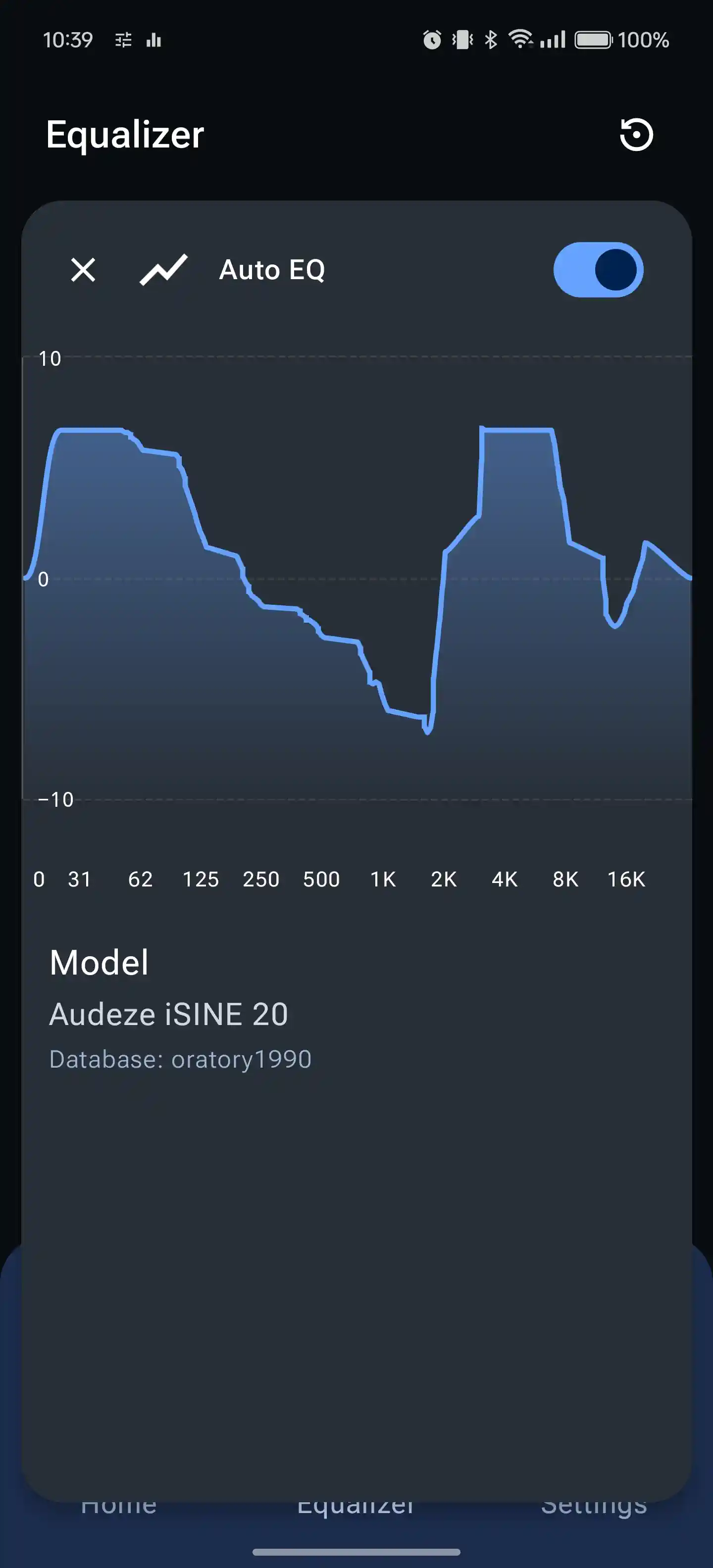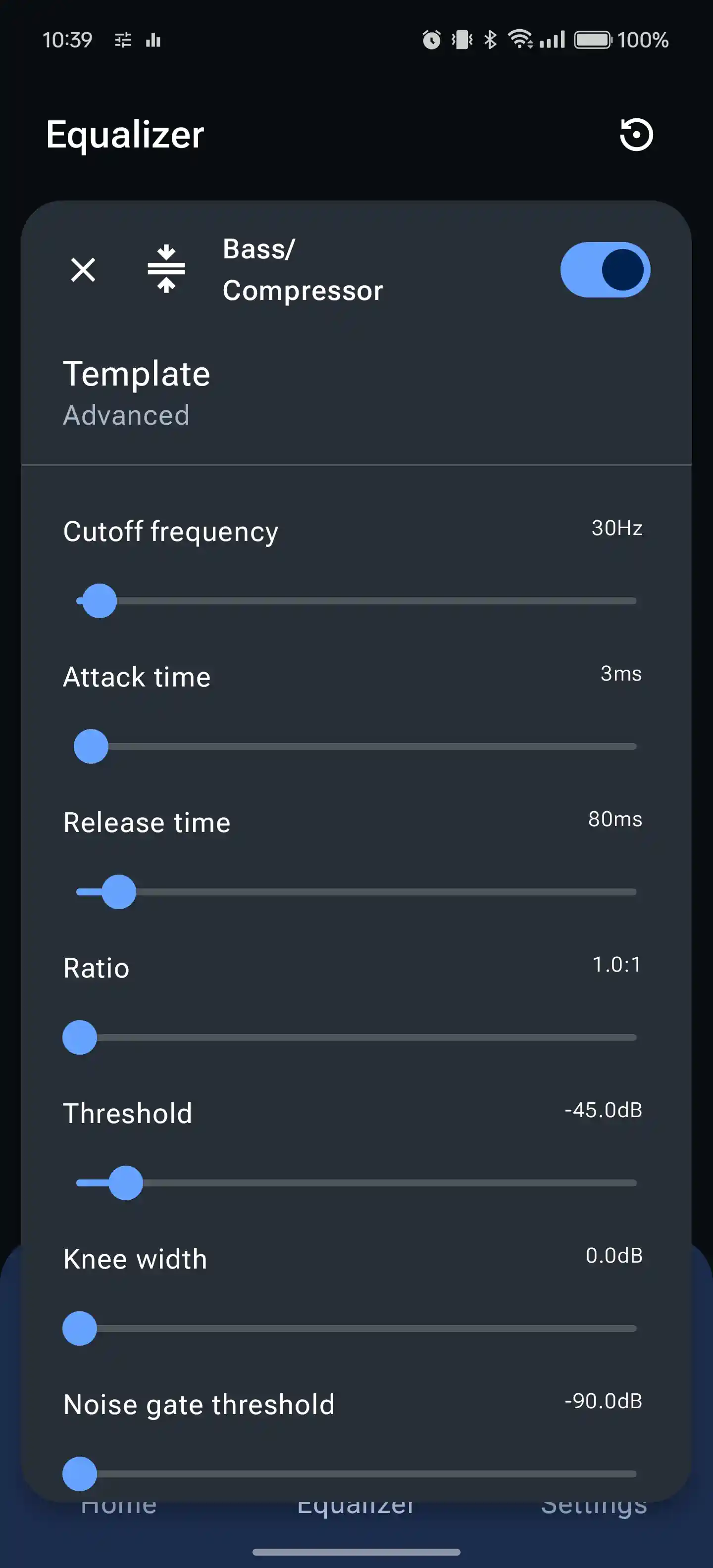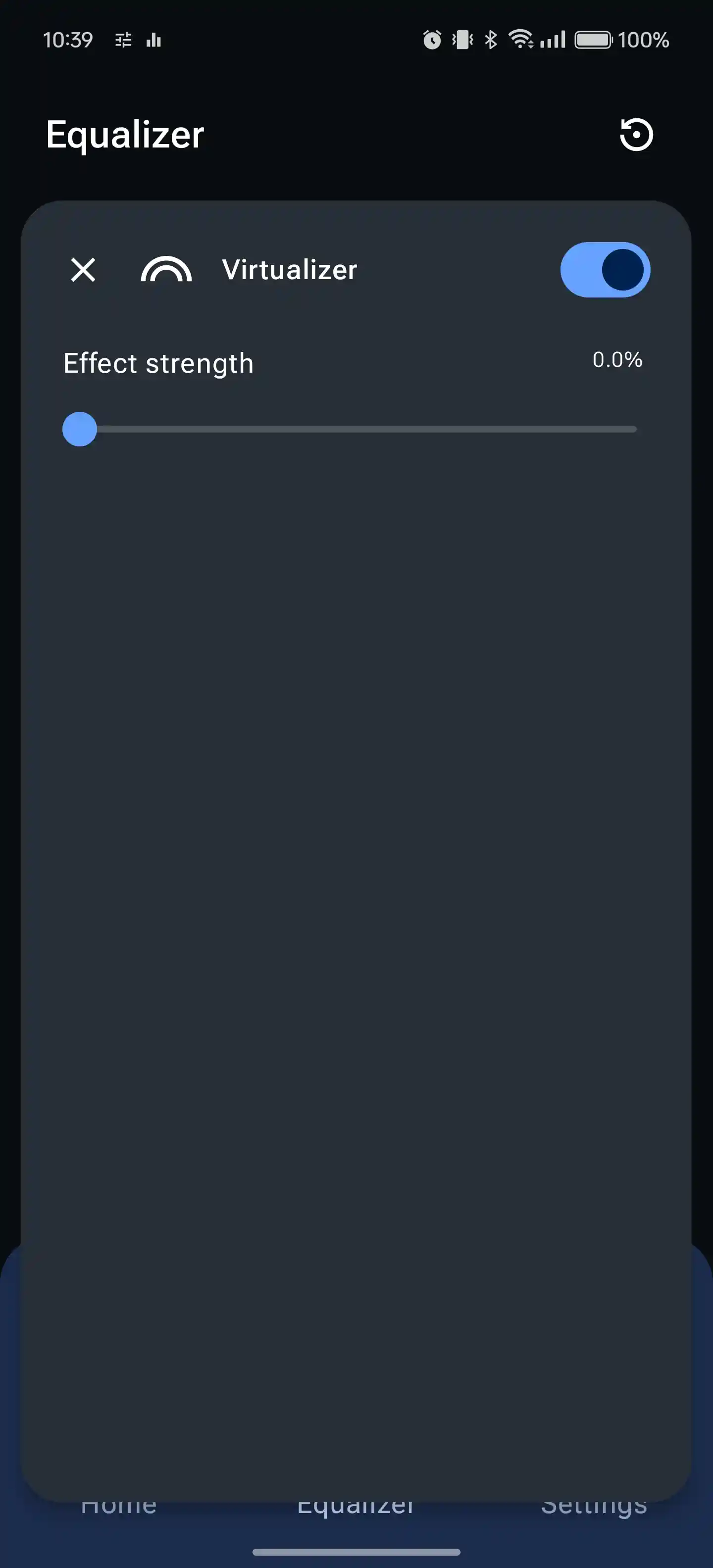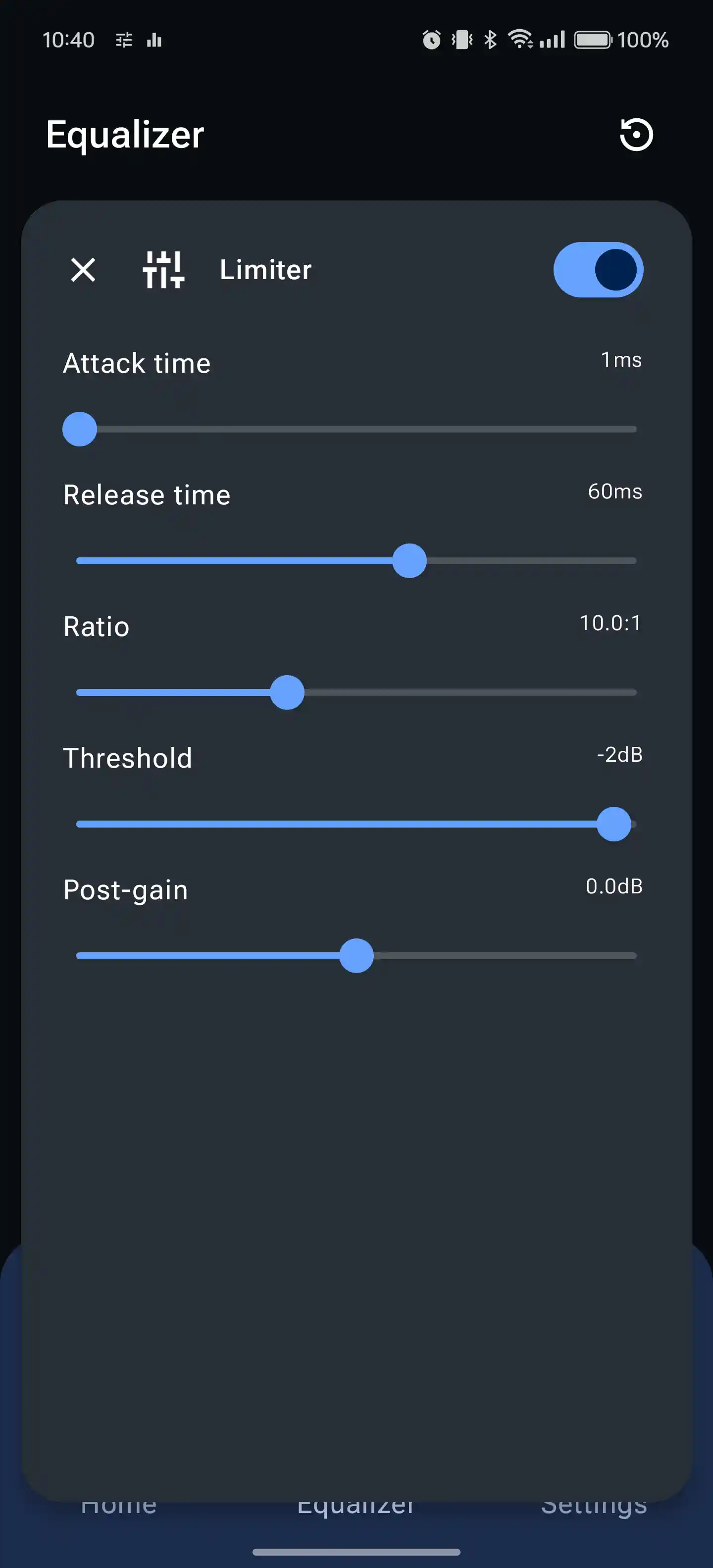Equalizer Effects Explained
There are various Equalizer effects with different purposes. Here are explanations of each one:
Graphic EQ

Band sliders:
A graphic equalizer divides the audio spectrum into several bands and allows the user to adjust the gain for each band individually using sliders. The 10-band graphic EQ includes sliders for the following frequencies: 31 Hz, 62 Hz, 125 Hz, 250 Hz, 500 Hz, 1 kHz, 2 kHz, 4 kHz, 8 kHz, and 16 kHz.
Post-gain:
Post-gain adjusts the overall volume of the signal after it has passed through the equalizer. This allows you to compensate for any changes in volume resulting from your EQ adjustments.
Auto EQ

Model:
Auto EQ automatically adjusts equalization settings based on AutoEq profiles from https://autoeq.app. This feature is useful for correcting the frequency response for specific headphone models.
Bass/Compressor

Cutoff frequency:
The cutoff frequency determines the point at which the bass frequencies begin to be affected by the EQ or compressor. Frequencies below this point will be adjusted.
Attack time:
Attack time is the duration it takes for the compressor to start reducing the gain after the input signal exceeds the threshold level. A shorter attack time results in faster response to loud signals.
Release time:
Release time is the duration it takes for the compressor to stop reducing the gain after the input signal drops below the threshold level. A longer release time results in a smoother transition back to the uncompressed state.
Ratio:
The ratio determines how much the signal is reduced once it exceeds the threshold. For example, a ratio of 4:1 means that for every 4 dB the input signal exceeds the threshold, the output signal will only increase by 1 dB.
Threshold:
The threshold is the level above which the compressor starts to reduce the gain. Signals below this level are unaffected.
Knee width:
The knee width controls the transition between no compression and full compression. A soft knee provides a gradual transition, while a hard knee provides a more abrupt transition.
Noise gate threshold:
The noise gate threshold determines the level below which the gate closes to mute background noise. Signals below this threshold are attenuated.
Expander ratio:
The expander ratio determines how much the signal is reduced when it falls below the threshold. An expander is used to increase the dynamic range by making quiet sounds quieter.
Pre-gain:
Pre-gain adjusts the volume of the signal before it passes through the compressor or EQ. This can help to ensure that the signal is at the appropriate level for processing.
Post-gain:
Post-gain adjusts the overall volume of the signal after it has passed through the compressor or EQ. This allows you to compensate for any changes in volume resulting from your processing.
Reverb

Environment:
Reverb simulates the effect of sound reflecting off surfaces in a room or environment. The environment setting allows you to choose the type of space being simulated, such as a small room, large hall, etc.
Virtualizer

Effect strength:
The virtualizer effect creates the illusion of a more spacious and immersive sound environment. The effect strength controls the intensity of this virtualization, allowing you to adjust how pronounced the effect is.
L/R Balance

Left channel:
The left channel control adjusts the volume of the audio signal sent to the left speaker or headphone.
Right channel:
The right channel control adjusts the volume of the audio signal sent to the right speaker or headphone.
Limiter

Attack time:
Attack time is the duration it takes for the limiter to start reducing the gain after the input signal exceeds the threshold level. A shorter attack time results in faster response to loud signals.
Release time:
Release time is the duration it takes for the limiter to stop reducing the gain after the input signal drops below the threshold level. A longer release time results in a smoother transition back to the uncompressed state.
Ratio:
The ratio determines how much the signal is reduced once it exceeds the threshold. For a limiter, this ratio is typically very high, effectively capping the maximum output level.
Threshold:
The threshold is the level above which the limiter starts to reduce the gain. Signals below this level are unaffected.
Post-gain:
Post-gain adjusts the overall volume of the signal after it has passed through the limiter. This allows you to compensate for any changes in volume resulting from your processing.
Final Tip
In Equalizer Settings, the Buffer size adjusts the resolution of the Equalizer effects. A lower number = more HD, but might cause clipping if your device isn't powerful enough to handle it. Adjust this with care. The default value is 3092.